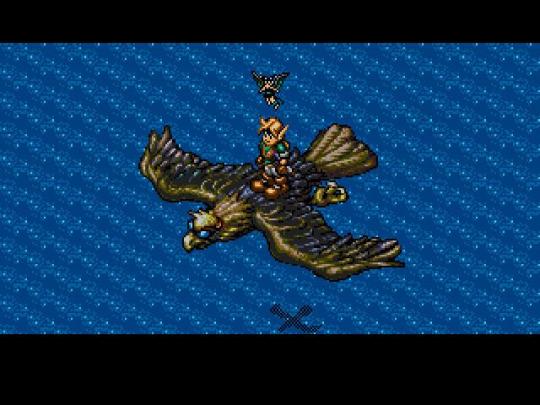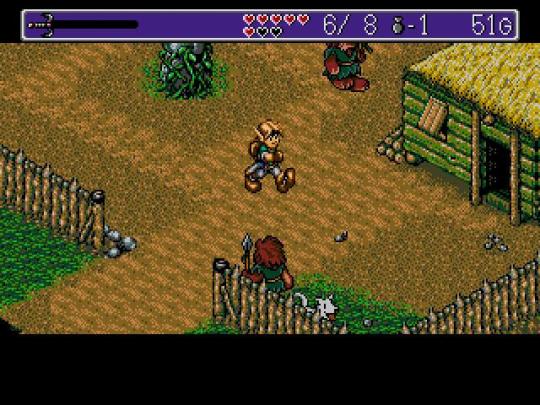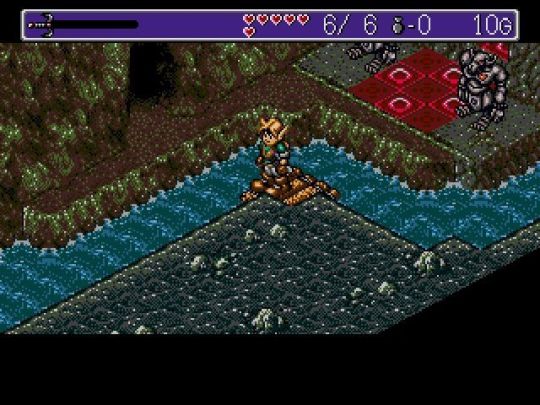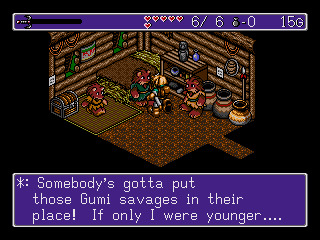#knightlore
Explore tagged Tumblr posts
Text

Paddy Byfield in "Aftermath / Hyrule / Ultraworld / Knightlore / Horizon / Terminal / Ultimate / Anthology", by Alasdair McLellan, st. Alice Goddard, mua Bea Sweet, hair Anthony Turner, for Arena Homme+, March 2025
23 notes
·
View notes
Text
Knight Lore - Featured in our book - Sinclair ZX Spectrum: a visual compendium
Whether discovering classic retro games for the first time or enjoying a nostalgic return to your 8-bit gaming days, Sinclair ZX Spectrum: a visual compendium is sure to enthrall and entertain.
Out now: https://www.bitmapbooks.com/collections/all-books/products/sinclair-zx-spectrum-a-visual-compendium
#bitmapbooks #book #retrogaming #retrogames #gaming #art #reading #foryou #zxspectrum #bookstagram #booktok #fyp #knightlore
4 notes
·
View notes
Text
Review: Vultures Vengeance "Dust Age"
Vultures Vengeance is a rising force in epic metal, drawing inspiration from legends like Cirith Ungol, Manilla Road, and Brocas Helm. Hailing from Rome, the band formed in 2009 and made their mark with a demo and two EPs before releasing their critically acclaimed debut album, The Knightlore, in 2019. The record garnered praise across the global underground metal scene. Now, they return stronger…
#Heavy Metal#High Roller Records#New Album#New Wave Of Traditional Heavy Metal#News#thenwothm#thenwothm.com#Vultures Vengeance
0 notes
Link


18 notes
·
View notes
Text
Knight Lore (Ultimate Play the Game, Spectrum, 1984)

Gallup Spectrum chart, Your Sinclair Issue 3, March 1986

We enter the charts of 1985 with our third Ultimate (Play the) game, and this is a big one. Bear in mind the whole history-written-by-the-victors thing, but the history they set out is quite something. Ultimate made Knight Lore, realised it was advanced enough to put their other games well in the shade, and so hung onto it for a while to give Sabre Wulf its moment in the sun. Meanwhile they also made another game in the same new style as Knight Lore, ready to be at the front of a predicted queue of the clones once it started a new trend. And they were right about it all! Within games, Ultimate’s 1984-5 era was an imperial phase on the level of 2009-10 Lady Gaga. And like her, their carefully executed plan involved starting off doing what everyone else was doing, and then moving on to a dimension beyond.
This is where my approach for this project of playing through games chronologically provides a useful perspective, because it highlights how startling an exception Knight Lore was to its contemporaries. As a child I played later games which took after it, and so even though I’m playing Knight Lore for the first time, much of what it does is not new to me. It’s only looking at it in context that it’s clear how much was new.

In short, in side-on games like Underwurlde, you could move in four directions: left, right, up and down. In top-down games like Sabre Wulf, you could move in four directions too -- let’s call them left, right, forwards and backwards, although the latter two are still up and down on screen. Knight Lore has an isometric 3D view, and you can move left, right, forwards and backwards, and up and down. A whole set of new possibilities come from that. Even before using them for new challenges, the freedom to move around in new ways, the experience of seeing the main character in different angles in 3D over its comic footstep beeps, is a new thrill.
The step up is not just that Knight Lore is in three dimensions, though, and indeed it wasn’t quite the first isometric 3D platform game (we’ll meet an earlier one soon!). It’s in how well executed it is alongside that jump. Far from its looks being compromised compared to its 2D predecessors, it looks cleaner, more solid, more real. We’ll see some other revolutions in what is possible in games in the future, but generally they come facilitated by technological advances, or as the result of big compromises. In Knight Lore’s case, it didn’t come from new technology but from working out new ways to use the same technology.

As for compromise, I suppose there is the forced decision to make every room monochrome. But that doesn’t feel like a compromise. It eliminates issues such as the ugly characteristic of many 2D Spectrum games of the colours of one object bleeding into adjacent ones. More than that, monochrome creates a stylistically distinct effect that does something for the game’s atmosphere that a bunch of different colours never could. The right limitations can be a catalyst for inspiration, as an expanding genre of modern retro games testify, sometimes in monochrome. Knight Lore’s bouncing bubbles and star-cluster curses and clanging portcullises have a different type of life to them than two dimensions could provide.
Ultimate didn’t settle for just the one big new idea, but layered an additional gimmick on top. Knight Lore’s plot is that Sabreman, having been bitten by the Sabre Wulf in Sabre Wulf, has been turned into a werewolf (or possible a sabrewulf). He’s trying to put together a cure, and in the meantime he transforms by moonlight. So there’s an onscreen diagram showing a sun or moon moving across the sky, and at the end of each brief day Sabreman gets taken out of the player’s control and goes through a painful-looking transformation process. His body goes through a series of cartoon distortions and emerges in new form. As a wolf, he can jump a little better but is subject to additional enemy attacks. Just as you were getting used to one extra dimension, you have to manage another one, time, in new ways.

There are a lot of things that are not such a departure. Knight Lore still involves a lot of precision jumping and dodging, even if it’s in 3D. It is inevitably incredibly difficult, and makes few concessions to added difficulties presented by the fact that its viewpoint means you sometimes can’t tell if an object or exit is far away or high up. If anything, it revels in the confusion at times. I am not going to stick with it until I achieve its goals, and not just because of my tight schedule. I don’t care about its plot or meeting its collection challenges. What I appreciate, though, is that it provides a sense of place, of being somewhere interesting and getting to explore it, that exceeds anything so far, even Jet Set Willy. The fact that it randomises your starting point each time you play is a nice extra bonus that not only lessens annoying repetition but gives an additional impetus to work out how all of these different places fit together. When I play it, I really want to see what each new room will be like, and to find out what other new dimensions it still has to offer.

2 notes
·
View notes
Photo

Mistigram: @AndyUglifruit pulls off the improbable once again, successfully reproducing the isometric environment of Rare's (well, Ultimate's) #KnightLore in the #teletext medium. This screen was included in last month's MIST1120 artpack collection. https://instagr.am/p/CI8q1K3noNP/
5 notes
·
View notes
Photo

Otro #juego #retro de los potentes para #MSX es #KnightLore disponible en tienda y breves www.goodgamespain.es
0 notes
Text
Top 10 Albums of 2019 (so far)
Here is some serious content for those who stuck around. This list is probably going to change, at least in order, by the end of the year.
Mirror - Pyramid of Terror
The Sabbathian - Latum Alterum
Spidergawd - Spidergawd V
Smoulder - Times of Obscene Evil and Wild Daring
Magic Circle - Departed Souls
Pulver - Kings Under the Sand
Gygax - High Fantasy
Lord Vicar - The Black Powder
Vultures Vengeance - The Knightlore
Destroyer of Light - Mors Aeterna
1 note
·
View note
Text
Landstalker: SEGA Genesis RPG Spotlight #3

Original Release Date: October 30, 1992
Original Hardware: SEGA Mega Drive
Developer/Publisher: Climax Entertainment/SEGA
I've already gone into the history of Climax Entertainment and SEGA's ultimately fruitless search for their own Zelda-killer, but both topics are quite relevant as we discuss Landstalker, the 1992 Genesis action-RPG most well-known for its isometric perspective. The game's developer, Climax Entertainment, was founded in 1990 by a former programmer on the Dragon Quest series named Kan Naito. Its first two projects were jointly developed with Sonic! Software Planning and should be familiar to anyone who has found their way to this article. Shining in the Darkness is a first-person dungeon crawler that kicked off SEGA's long-running Shining series. Shining Force, a turn-based tactical RPG, is perhaps the most celebrated entry in that series. Climax's contributions to those games included vital elements such as art and programming, but the series was ultimately the child of Sonic! and would proceed solely in their care after the first two installments.
Having worked on a dungeon crawl RPG and a tactical RPG, Climax had already started making a name for themselves with fans of the role-playing genre. It made sense that their first wholly-developed title would also be an RPG. While Climax was independent of SEGA, they had a good relationship with the publisher at this point. Perhaps out of a desire to get away from turn-based games and try something new, or perhaps to help SEGA try to find its Zelda, Climax decided their new game would be an action-RPG. Someone on staff must have been a fan of British computer games, because they also opted for an isometric viewpoint for their game, a relatively unusual choice among Japanese-developed games of the time.

Back before hardware could easily handle a lot of polygons, you basically had a few choices if you wanted to make a 3D game. To start with, no matter which route you took, your camera would almost certainly have to be fixed. Many developers opted to use an overhead view, which allowed players to move easily in any direction and see the world around them without any issues. This worked well for many genres and was quite popular as a result. The only catch is that the player is usually so far above the action that it hardly feels like a real 3D space. In fact, most of these games simply swapped one dimension for another, as the ability to move in all directions often took the place of any real verticality.
Another option was to go with a first-person view. Again, the camera was essentially fixed in most of the early games that went in this direction. The hardware simply couldn't handle a player moving about and looking as they liked. As such, games played from this point of view usually had the player move in fixed chunks of distance. This kind of stop-and-go gameplay was best suited for games with a more leisurely pace, such as RPGs or adventure games. Some clever programming and design was being applied to bring this perspective to PC action games around the time of Landstalker's development, but it would still be a while before consoles would enjoy the fruits of that. The benefits here are obvious. Having the player look through the character's eyes makes the game feel more lifelike and the world more three-dimensional. The main drawback is that it gave players a very limited view of the area around them.

Then there was the isometric perspective. Skewing things at that angle allowed the world to express depth without giving up the player's ability to see all around them at a glance. With this method, it was easier to create games that afforded players the ability to move in all directions while still being able to jump and climb. It could also be quite cinematic if things were set up the right way. This viewpoint was popularized by Ultimate Play the Game's Knightlore, which spawned a cottage industry of clones in the British computer gaming scene in the 1980s. While this seems like the ideal choice for an action-adventure, there's a serious drawback that becomes almost immediately obvious to anyone after playing one of these games for a little while.
Simply put, the depth is an illusion. Our ability to perceive how far or close objects are to us depends greatly on methods that could not be easily replicated by a 2D television at the time. Polygonal games could alleviate this issue by allowing the player to move the camera, giving them the chance to compare objects and figure out where they were, relative to one another. Sprite-based games had no such luxury for the player, who was at the mercy of the developer's ability and/or desire to lay things out in a manner that wasn't confusing. This is not an easy task by any means, and many developers simply couldn't resist using depth perception issues to hide secrets and trick the player. It's that specific respect that makes the isometric viewpoint somewhat controversial among players.

On top of that, most controllers since Nintendo's 8-bit hardware launched use a directional pad for movement. Such pads typically emphasize the cardinal directions, and that left the developer with a difficult choice. What happens when the player pushes up on the pad? Will they go to the upper-left, or will they go to the upper-right? Do you force them to use diagonals so that things match up properly? I think there's a good reason why the most popular isometric games tended to be slower-paced affairs. But there's always someone who tries to ice skate uphill, and over the course of their first decade of existence Climax would keep on taking a run at just that.
Landstalker in a lot of ways is asking more of this perspective than any of Climax's other isometric games. Battles are often crowded and take place right on the map, requiring you to quickly turn directions to stave off enemies coming at you from all around. There's a fair bit of complex platforming, much of it involving moving platforms whose relationships to each other aren't always obvious. Missteps will send you hurtling back to the start of whatever you were trying to climb. Secrets are hidden behind pieces of the scenery that the camera can't see, and some of them require you to jump onto ledges and objects that aren't visible to you. Should you happen to run out of life hearts and have no healing items left, you'll be unceremoniously dumped back to the title screen, forced to replay from your last save point. Said save point is likely in a nearby town, so you pretty much have to complete dungeons in one go. Naturally, you can't move the camera an inch.

What this all comes down to is that while Landstalker has a lot of qualities that almost everyone can agree on, it's an incredibly divisive game. Its gorgeous visuals, strong soundtrack, and interesting puzzle designs make it hard to outright hate, but the line between mediocre and masterpiece appears to lay in how well the individual can get along with the necessary outcomes of its isometric perspective. I've noticed that those well-versed in those Knightlore-inspired UK computer games have less of a problem getting over that hurdle than those who were raised on a diet of Japanese console games or American arcade games. That makes a lot of sense, given that learning to cope with the quirks of the viewpoint weren't part of the education of a lot of players outside of that particular group. Arcade players had Marble Madness, but that controlled with a trackball. Console players only had the odd PC port from Electronic Arts or the occasional release from Ultimate Play the Game themselves under their new name of Rare.
I feel like I grew up on a relatively mixed diet of computers, arcades, and consoles. The first games I played were in arcade cabinets. The first machine I had in my home capable of playing games was a Commodore 64. But though I was late to the console party, once I got my Nintendo Entertainment System I was in, all the way. Yet for all the British classics I played on that C64, I never did get into isometric games all that much. In turn, it's something I feel like I'm fighting with every step of the way when I play Landstalker. I have a good time with literally every aspect of the game except the basic controls. Curiously, it's a far greater issue for me here than it is with Dark Savior, one of the game's follow-ups. But then again, that game allows me to move the camera a little, isn't as punishing when I fail, and moves its combat to a far simpler arena.

Outside of that admittedly major issue, I have nothing but praise for Landstalker. The environments are varied, the overworld feels big, and the dungeons are cleverly designed with puzzles a-plenty. I love the art style, and the designs fit the Genesis's capabilities perfectly. The story isn't nearly as simple as it initially appears, though like Dark Savior its ending sort of fizzles to nothing. You get a surprisingly good sense of the characters in spite of relatively little dialogue for some of them, and the more developed characters really come out well. It's about on the level of a silly Saturday morning cartoon in most respects, but it's at least a good one. I love that wherever it feels like there should be a secret, there is one. I also genuinely appreciate that this is a game where effort is typically rewarded with something of appropriate value. The game aggravates the heck out of me, but after I get through one of those wall-punching situations, I usually feel pretty good about it.
In some ways, I find Landstalker more enjoyable on a replay. You know what to expect, you've seen your way through the worst of it once before, and you know what you can look forward to. But the controls and perspective, so annoying at the time, feel worse every time I come back. I also find myself less tolerant of the many moments where the developer knew exactly what kind of unfair trickery they were relying on and did it anyway. It's a bizarre habit of Climax. Instead of designing their games around obscuring the weak points, they tend to shine a bright flashlight directly upon them. This isn't a problem, Landstalker says. It's so very much not a problem that we're going to force you to deal with it as much as possible. I'd love to chalk that up to their relative newcomer status at the time of Landstalker's release, but it's a behavior that persists in their work. The most recent Climax game I played, the dreadful Kingdom of Paradise for the PSP, was similarly proud of its shortcomings.

Looking at Landstalker from a design standpoint, it's clear that Climax could have made a high quality action-RPG that might have pleased a wider crowd had they only stuck closer to the conventions of the genre. That said, it's hard to be too down on a developer for trying something different. There are a lot of people who have no problems with Landstalker's controls and platforming, and for them, it's a game that gives a Zelda-like feeling without directly copying Zelda. That's something precious, particularly in Landstalker's era. I think it says a lot for Landstalker that in spite of my borderline hatred of its fundamental mechanics, I still think it's a really great game. It just has a really big asterisk next to it, is all.
Interestingly, if you want to play Landstalker today, your options are quite limited. It's available on the Wii Virtual Console, the PC SEGA Genesis & Mega Drive Classics Collection, and in its original cartridge form. None of the console SEGA Genesis collections include the game, and although it would have benefited better than most from a SEGA 3D Classic treatment on the 3DS, there's no such luck there either. Wherever you choose to play it, make sure you've got a good directional pad to work with. The game isn't terribly long, so if you can deal with its flaws, it's certainly worth the time for a playthrough.

Previous: Beyond Oasis
Next: Sword of Vermillion
If you enjoyed reading this article and can’t wait to get more, consider subscribing to the Post Game Content Patreon. Just $1/month gets you early access to articles like this one, exclusive extra posts, and my undying thanks.
#retro#gaming#sega#sega genesis rpg spotlight#climax entertainment#landstalker#sega genesis#sega mega drive#rpg#genesis#mega drive
3 notes
·
View notes
Text

Paddy Byfield in “Aftermath / Hyrule / Ultraworld / Knightlore / Horizon / Terminal / Ultimate / Anthology”, by Alasdair McLellan, st. Alice Goddard, mua Bea Sweet, hair Anthony Turner, for Arena Homme+, March 2025
2 notes
·
View notes
Photo

Shreddit's Top 5 of 2019: Roundup
via kaptain_carbon in /r/Metal
For anyone that missed this or does not know what we do each quarter, here is our top 3 of 2019. Thanks to all who voted and please feel free to share your thoughts, concerns, exasperations, and sheer dumbfounded disbelief at what was voted.
Original Thread
Raw Vote Count
Sidebarpic: Man and Woman Contemplating The Moon
Top 5 of 2019
(--) New Release This Quarter
(##) Charted Outside Last Year's Top 10
Albums / Position Vote Count First Quarter Position Genre 1. Traveler - Traveler 73 #1 Heavy 2. Misþyrming - Algleymi 53 -- Black 3. Funereal Presence - Achatius 41 #4 Black 4. Vanum - Ageless Fire 39 #2 Black 5. Idle Hands - Mana 36 -- Gothic Rock / Heavy 6. Deathspell Omega - The Furnaces of Palingenesia 26 -- Black 7. Vulture's Vengeance - The Knightlore 24 -- Heavy 8. Darkthrone - Old Star 23 -- Black? 9. Saor - Forgotten Paths 21 #3 Atmospheric Black 10. Ares Kingdom - By The Light Of Their Destruction 21 -- Thrash / Death 10. Tanith - In Another Time 21 -- Heavy 10. Smoulder - Times of Obscene Evil and Wild Daring 21 -- Power / Epic Doom Sinmara - Hvísl Stjarnanna 20 #5 Black Inter Arma - Sulphur English 17 -- Sludge/Black/Death/Post- Spirit Adrift - Divided By Darkness 16 -- Doom / Progressive Departure Chandelier - Antichrist Rise To Power 14 ## Black Skáphe + Wormlust - Kosmískur hryllingur 14 -- Psychedelic Black Hath - Of Rot And Ruin 14 -- Progressive / Blackened Death Wormwitch - Heaven That Dwells Within 14 -- Black / Crust Full Of Hell - Weeping Choir 14 -- Grind / Death Iron Griffin - Curse The Sky 13 ## Heavy / Epic Chevalier - Destiny Calls 13 -- Heavy / Speed Devil Master - Satan Spits On Children Of Light 13 ## Black / Punk Ossuarium - Living Tomb 12 #6 Death / Doom Magic Circle - Departed Souls 10 -- Heavy / Doom Waste Of Space Orchestra - Syntheosis 10 -- Psychedelic Véhémence - Par le Sang Versé 10 ## Black / Epic Батюшка - Панихида 9 -- Black MINENFELD - The Great Adventure 9 -- Death Krypts - Cadaver Circulation 9 -- Death / Doom Venom Prison - Samsara 9 ## Death / Hardcore Infernal Conjuration - Infernale Metallum Mortis 8 -- Death Andavald - Undir skyggðarhaldi 7 -- Black Critical Defiance - Misconception 7 -- Thrash Fetid - Steeping Corporeal Mess 7 -- Death Calyx - Vientos Arcaicos 7 -- Black Fuming Mouth - The Grand Descent 7 -- Death / Crust Magnabolt - Magnabolt 7 -- Heavy / Power Nucleus - Entity 7 -- Death ... in space Pissgrave - Posthumous Humilitation 6 #8 THE FUCK IS THAT COVER?! / Death Bewitcher - Under The Witching Cross 6 -- Black / Speed Ultra Silvam - The Spearwound Salvation 6 -- Black Blue Hummingbird On The Left - Atl Tlachinolli 5 ## Black Imha Tarikat - KARA IHLAS 5 -- Black Gloryhammer - Legends from Beyond the Galactic Terrorvortex 5 -- Power Soen - Lotus 5 #9 Progressive / Hard Rock Inculter - Fatal Visions 5 -- Blackened Thrash
4 | Akasha [Blackened Thrash]
4 | Avantasia [Power]
4 | Oozing Wound [Sludge / Rock]
4 | Sielunvihollinen [Black]
4 | Warforged [Progressive / Tech]
3 | Aephanemer [Melodic Death]
3 | Allegaeon [Melodic Death]
3 | Asphodelus [Death / Doom / Gothic]
3 | Baroness [Hard Rock]
3 | Cân Bardd [Epic / Black]
3 | Candlemass [Epic Doom]
3 | Devin Townsend [Progressive]
3 | Drastus [Black / Death]
3 | Encoffinized [Caveman Shit]
3 | Imprecation [Death]
3 | Kvelgeyst [Black?]
3 | Numenorean [Melodic Black]
3 | Nusquama [Black]
3 | Owls Woods Graves [Black / Punk]
3 | Pensées nocturnes [Avant]
3 | Pig's Blood [Death]
3 | Pulver [Heavy]
3 | Riot City [Heavy]
3 | Soulmass Progressive Death]
3 | Suffering Hour [Black / Death]
3 | Sunn O))) [Drone]
3 | Vigilance [Heavy]
3 | Vulture [Speed / Thrash]
3 | Warmoon Lord
Stock Report
Biggest Winner: Departure Chandelier from 4 votes last quarter to 14 this quarter
Biggest Losers: Candlemass from 22 votes to 3 votes. Pissgrave from 21 votes to 7 votes. Soen from 20 votes to 5 votes.
Possible Icebreakers
Album you knew what was going to be where it ended up
Album you were surprised made it to wherever it ended
Album you are shocked people even listed it
Album you are shocked no one but you voted for
Pre-Top 7 Stock MarketBetting
Album that is going to stay strong in its position next quarter
Album that will drop off (or rise) next quarter
0 notes
Photo

Vultures Vengeance - The Knightlore [Mid Year Heavy Review] #heavymetal #metal #fantasy @kaptain_carbon . . . #deathmetal #blackmetal #melodicdeathmetal #album #hollywoodmetal #comicbooks #fantasyart #tabletop #dnd #rpg #videogames #gaming #movie #guitar #thrashmetal #review #italy #fantasyart #music #film #epic (at Los Angeles, California) https://www.instagram.com/p/BzTezsopRk5/?igshid=1x55gclih6gtj
#heavymetal#metal#fantasy#deathmetal#blackmetal#melodicdeathmetal#album#hollywoodmetal#comicbooks#fantasyart#tabletop#dnd#rpg#videogames#gaming#movie#guitar#thrashmetal#review#italy#music#film#epic
0 notes
Photo


(via Pentagram V1.30 - Knightlore sequel as a port to the C64/C128 enhanced even further! )
6 notes
·
View notes
Text
Vultures Vengeance - The Knightlore

Vultures Vengeance - The Knightlore
Ein lohnendes Album für konzentrierte Hörer, das mit jedem Durchgang wächst. #2019 #CDBericht #CDReview #EpicMetal #GatesOfHellRecords #HeavyMetal #TheKnightlore #VulturesVengeance Read the full article
0 notes
Text
Album Review: Vultures Vengeance - The Knightlore (Gates Of Hell Records)
Album Review: Vultures Vengeance – The Knightlore (Gates Of Hell Records)
The wait is over…ten years into their career, Italian heavy epic metallers Vultures Vengeance deliver on the promise shown on their “Where the Time Dwelt In” and “Lyrids: Warning From the Reign of the Untold” EPs with their first full-length “The Knightlore”.
The album will be released on May 10th 2019 via Gates of Hell Records.
The NWOBHM influences are strong here. Kicking off with the roaring…
View On WordPress
#Album#Album Review#Albums 2019#Gates of Hell Records#heavy metal#Metal#NWOBHM#The Knightlore#Vultures Vengeance
0 notes
Text
FRENZY - Presentación Madrid 17 de Mayo
FRENZY – Presentación Madrid 17 de Mayo
Tras el éxito cosechado en sus primeras fechas presentando Blind Justice en Murcia, Vitoria y Holanda, FRENZY presentará en Madrid su disco por todo lo alto en la sala WE ROCK.
La cita tendrá lugar el próximo Viernes 17 de Mayo y contarán con unos invitados de lujo, los italianos VULTURE’S VENGEANCE, quienes editarán su esperado primer LP “The Knightlore” semanas antes a través de Gates of Hell…
View On WordPress
0 notes